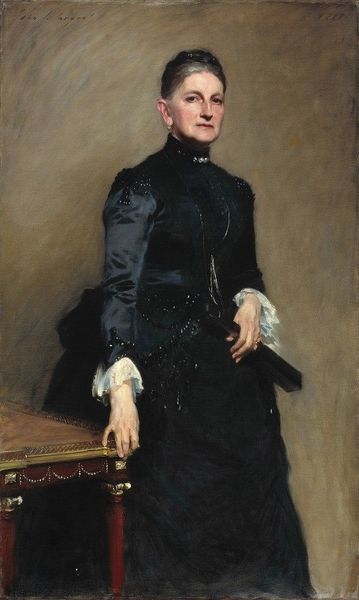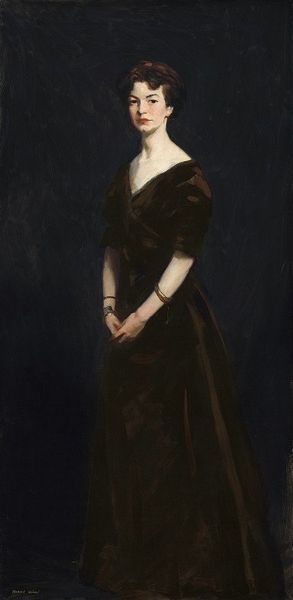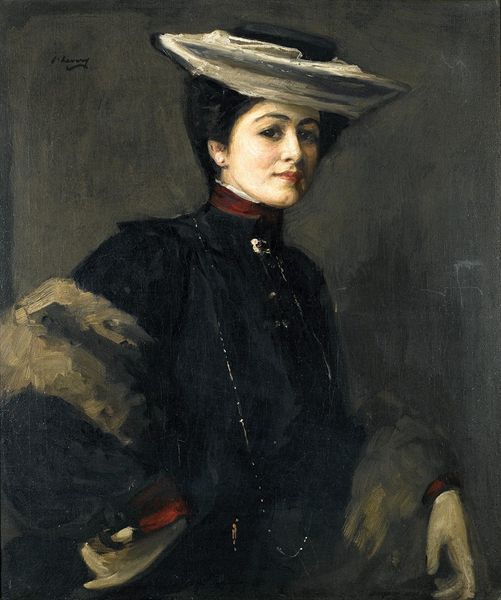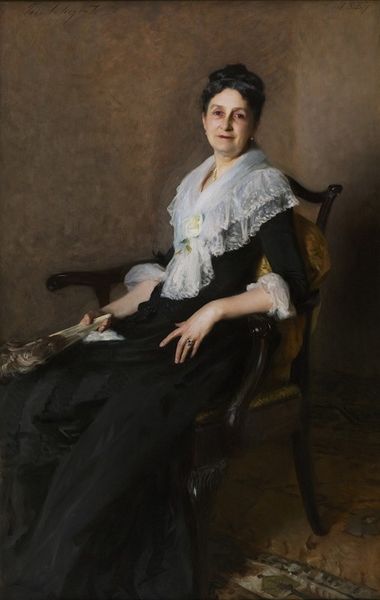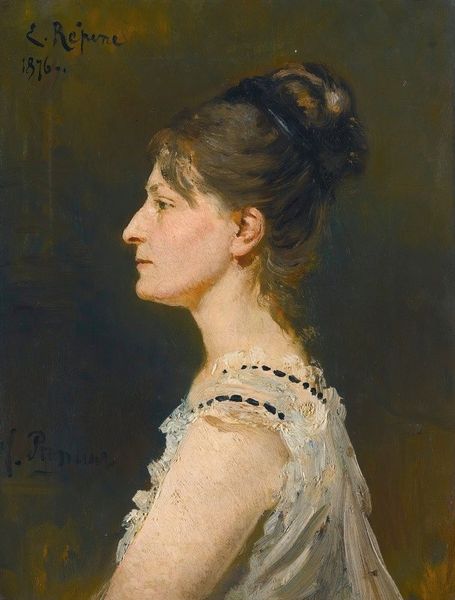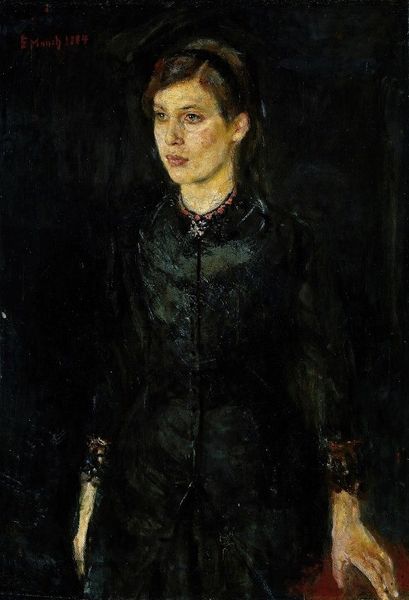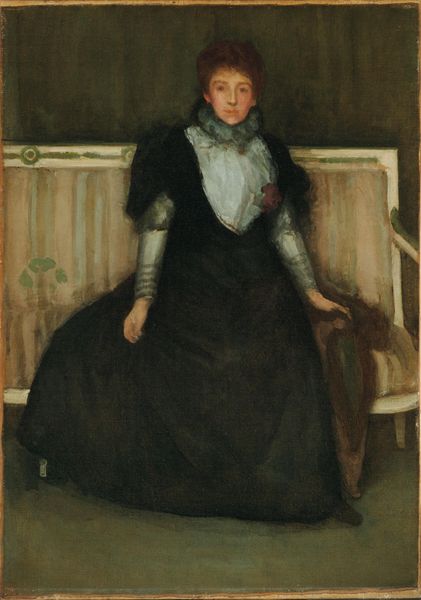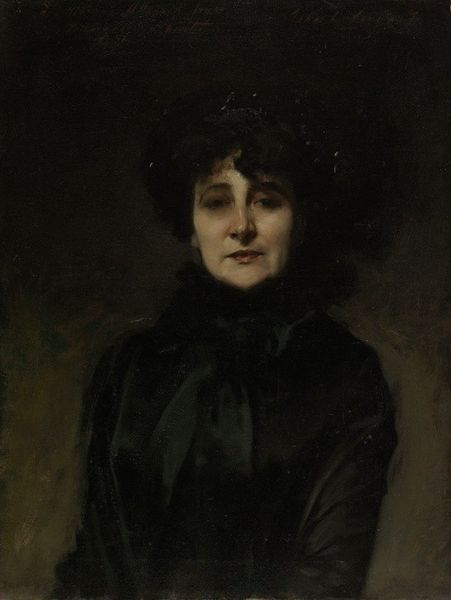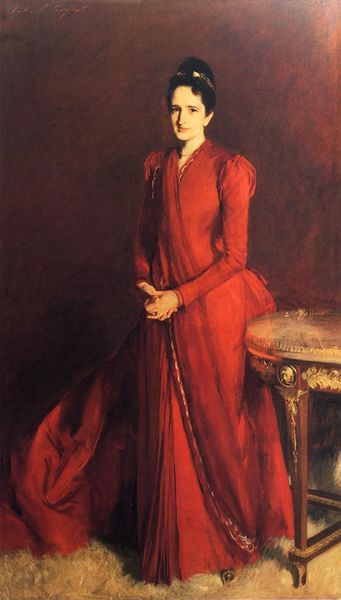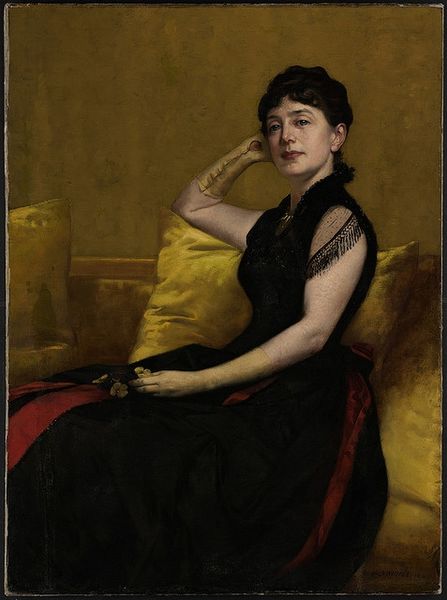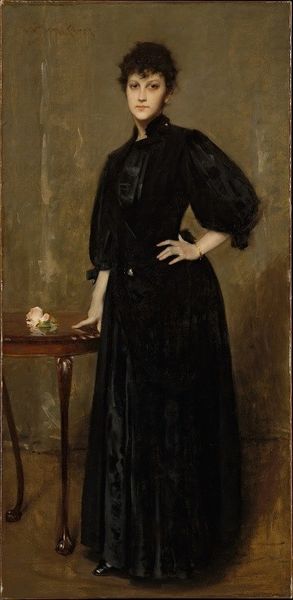
painting, oil-paint
#
portrait
#
character portrait
#
painting
#
oil-paint
#
portrait head and shoulder
#
facial portrait
#
academic-art
#
lady
#
portrait art
#
fine art portrait
#
realism
Copyright: Public domain
Editor: Here we have Tom Roberts’ "Madame Pfund" from 1887, an oil painting of a woman in profile. I'm struck by the contrast between the dark dress and the almost luminous hat. What draws your attention when you look at this work? Curator: What intrigues me is the rendering of the dress itself. Consider the sheer labor involved in creating lace like that – the countless hours of skilled needlework, the cost of the materials, like silk or linen thread, and how it signifies a certain class position and leisure. Don’t you think this speaks volumes about the society Roberts was portraying? Editor: That’s a great point! It really highlights the divide between those who could afford such luxury and those who produced it. So, the dress isn't just fabric, it's a record of labor? Curator: Exactly! And it's important to note that Roberts was painting during a time of significant social upheaval and labor movements. Does her confident gaze perhaps challenge the established power structures or uphold it through a demonstration of refined luxury? Editor: That’s fascinating. So, by looking at the materials and the processes involved, we can really understand the social context in a richer way. This really opens my eyes on portraits from this era. Curator: Indeed. By understanding the economic realities embedded in the paint, the canvas, and the subject’s attire, we can see beyond the surface and engage with a deeper understanding of power, labor, and the very fabric of society. Editor: I'm definitely going to look at paintings with new eyes now. Thinking about the means of production is really impactful. Curator: Wonderful! I'm glad to have shed some light on a more material understanding.
Comments
No comments
Be the first to comment and join the conversation on the ultimate creative platform.
